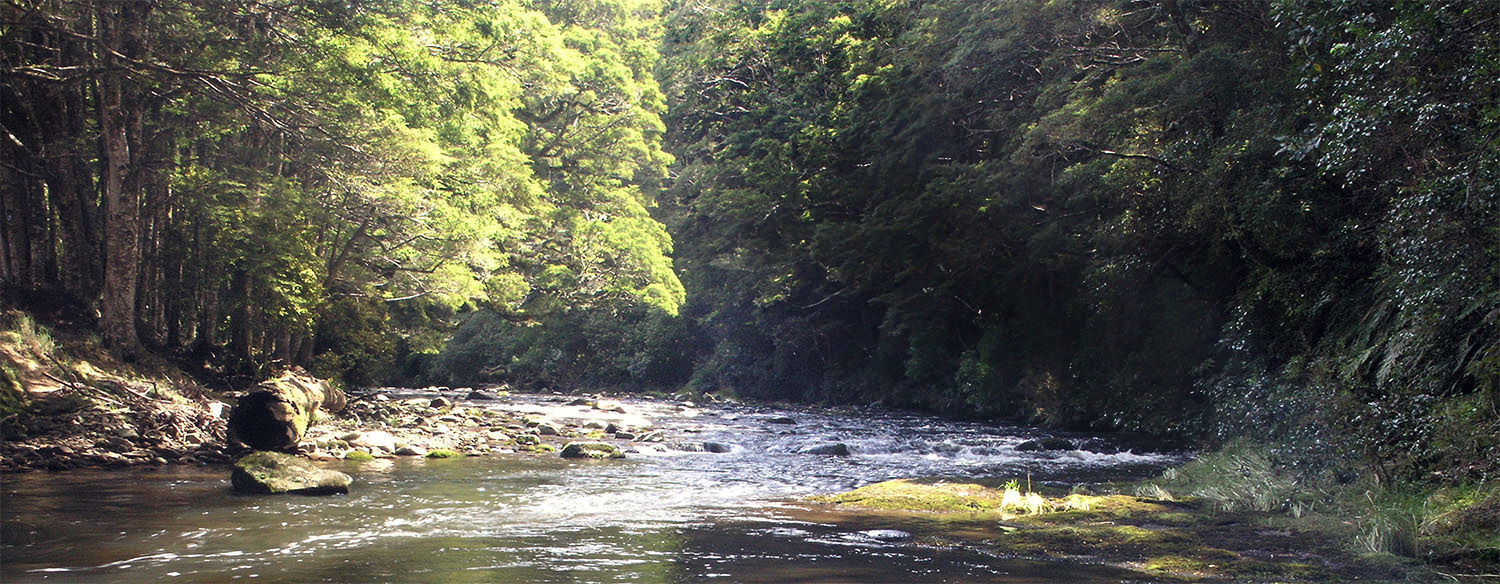Spiny gilled mayfly nymphs, Coloburiscus humeralis, are found in cool, moderately stable stoney streams throughout New Zealand. The naturals feature strongly in the diets of trout in many waterways and good imitations are so different to regular patterns they are often the undoing of educated fish.
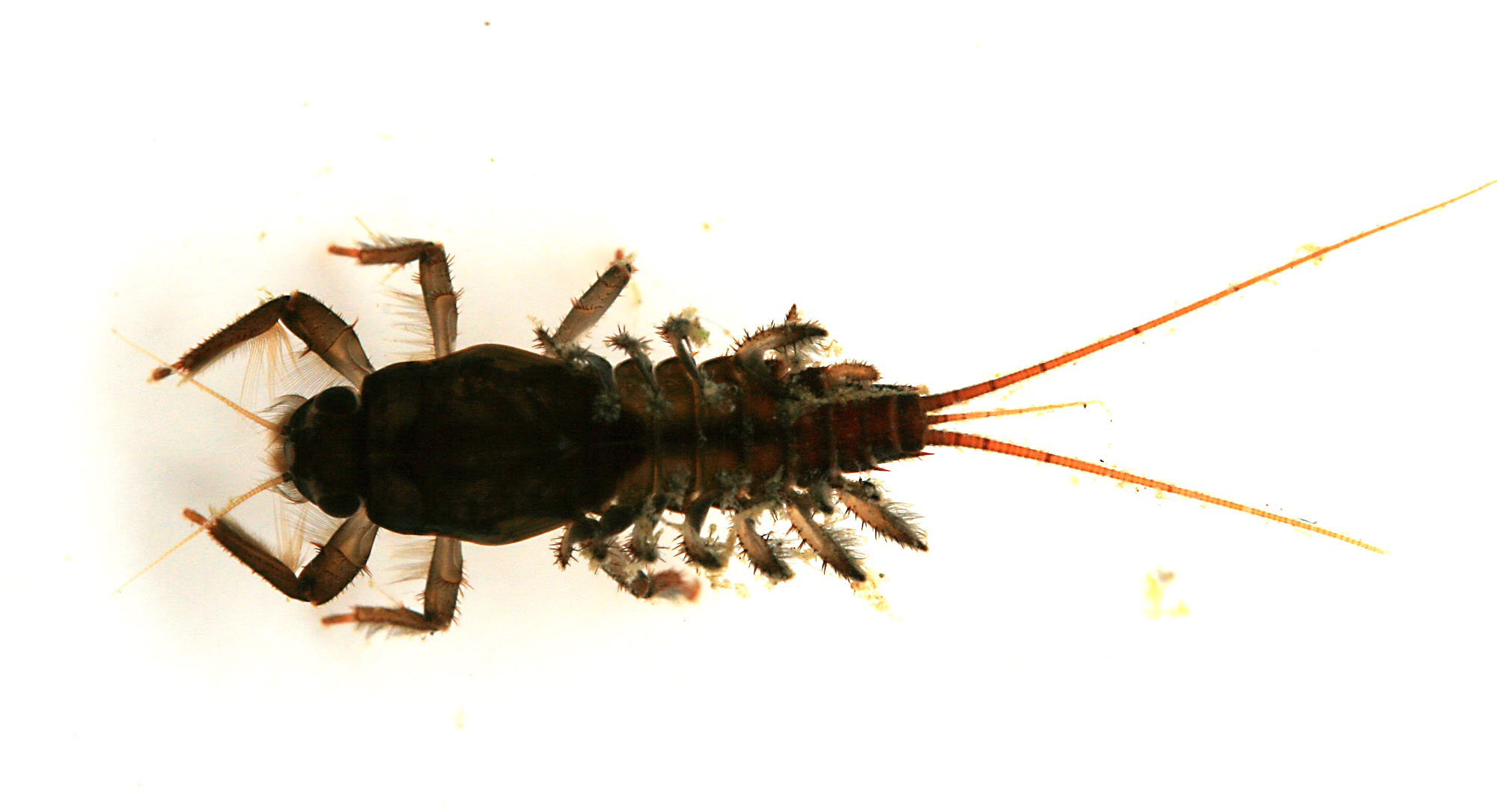
The Jelly Leg Colly (JLC) is basically Peter Carty’s beadhead Coloburiscus nymph with Stretch Cord legs. While Peter designed a brilliant pattern, responsible for many double figure fish, the Krystal flash or extra small Spanflex legs do not imitate those of the natural as well as Stretch Cord does. Coloburiscus nymphs have very robust translucent legs that appear even larger and more translucent on account of a fringe of fine hairs used for filter feeding (see image). Viewed from below, with the light passing through them, they are likely to glow. Glowing brown Stretch Cord legs have such an impact on the overall underwater appearance of the modified imitation I named it the Jelly Leg Colly.
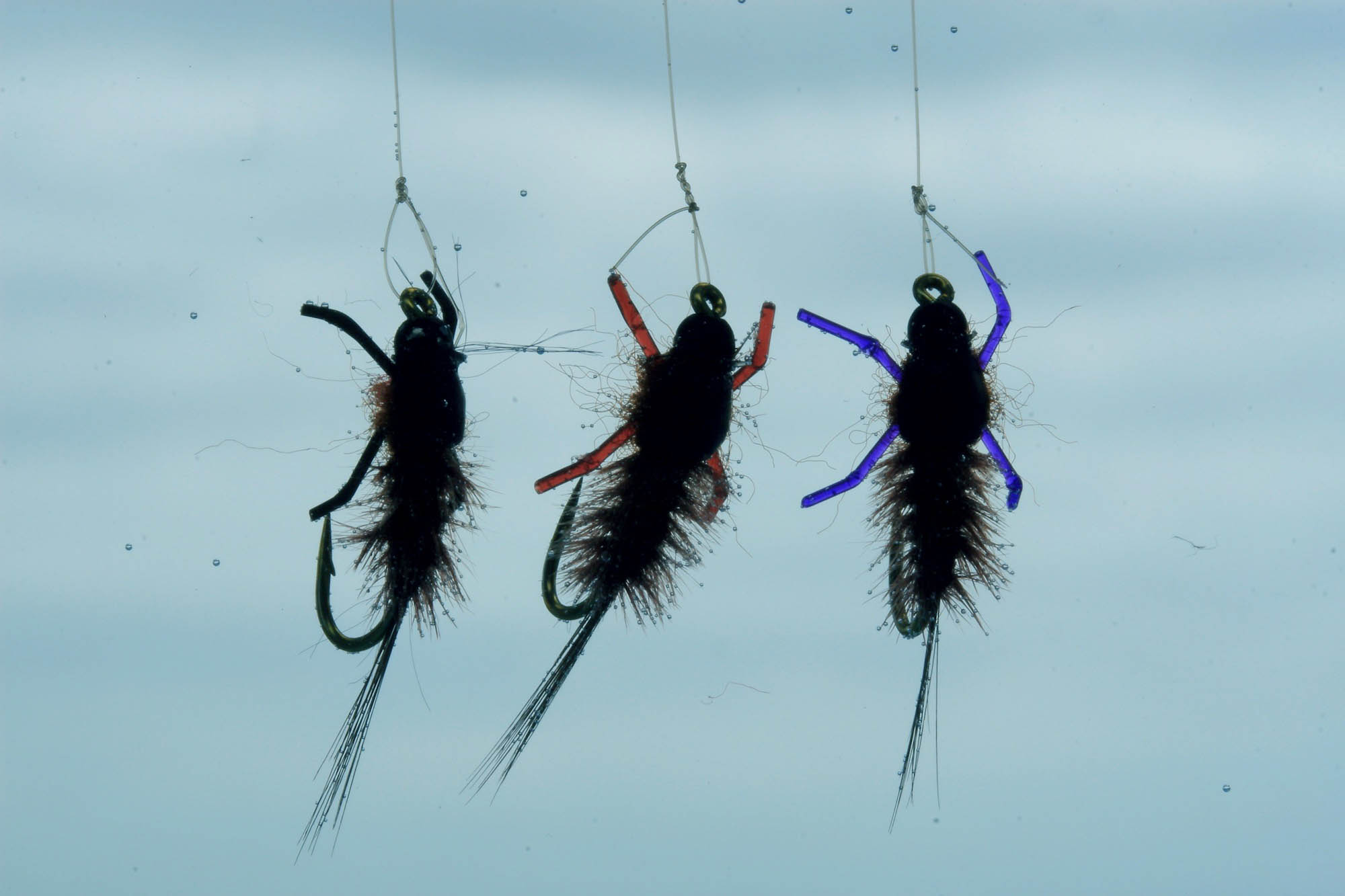
Jelly Leg Collys underwater against an overcast sky
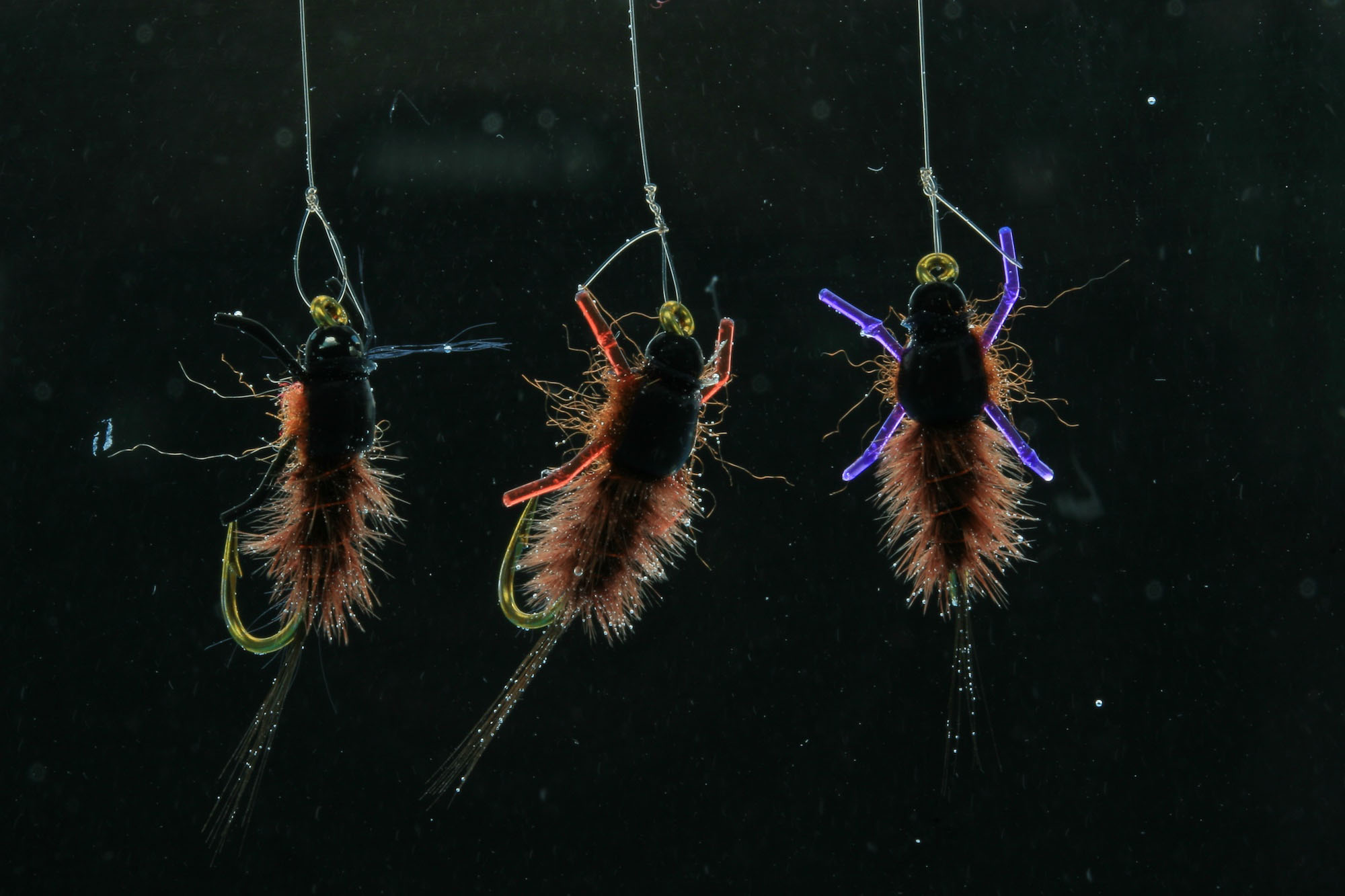
Jelly Leg Colly against a dark background
Jelly Leg Colly Recipe:
HOOK: TMC 3761 size 12
HEAD: 2.3-2.5mm black tungsten bead
UNDER-BODY: 0.020” lead wire
THREAD: Black UTC 140 denier (6/0)
TAIL: Brown cock hackle fibres (Coque de leon are translucent like the natural).
RIB: Fine copper brown Ultra wire (or other dark copper wire)
ABDOMEN: 2-3 brown ostrich hurls depending on thickness (Hurls should be at least 6cm long).
WING CASE: 4mm wide strip of black thin skin.
THORAX: Brown Antron dubbing
LEGS: 2x2cm strands of black, brown or purple 0.5-0.6mm Stretch Cord
Tying Steps:
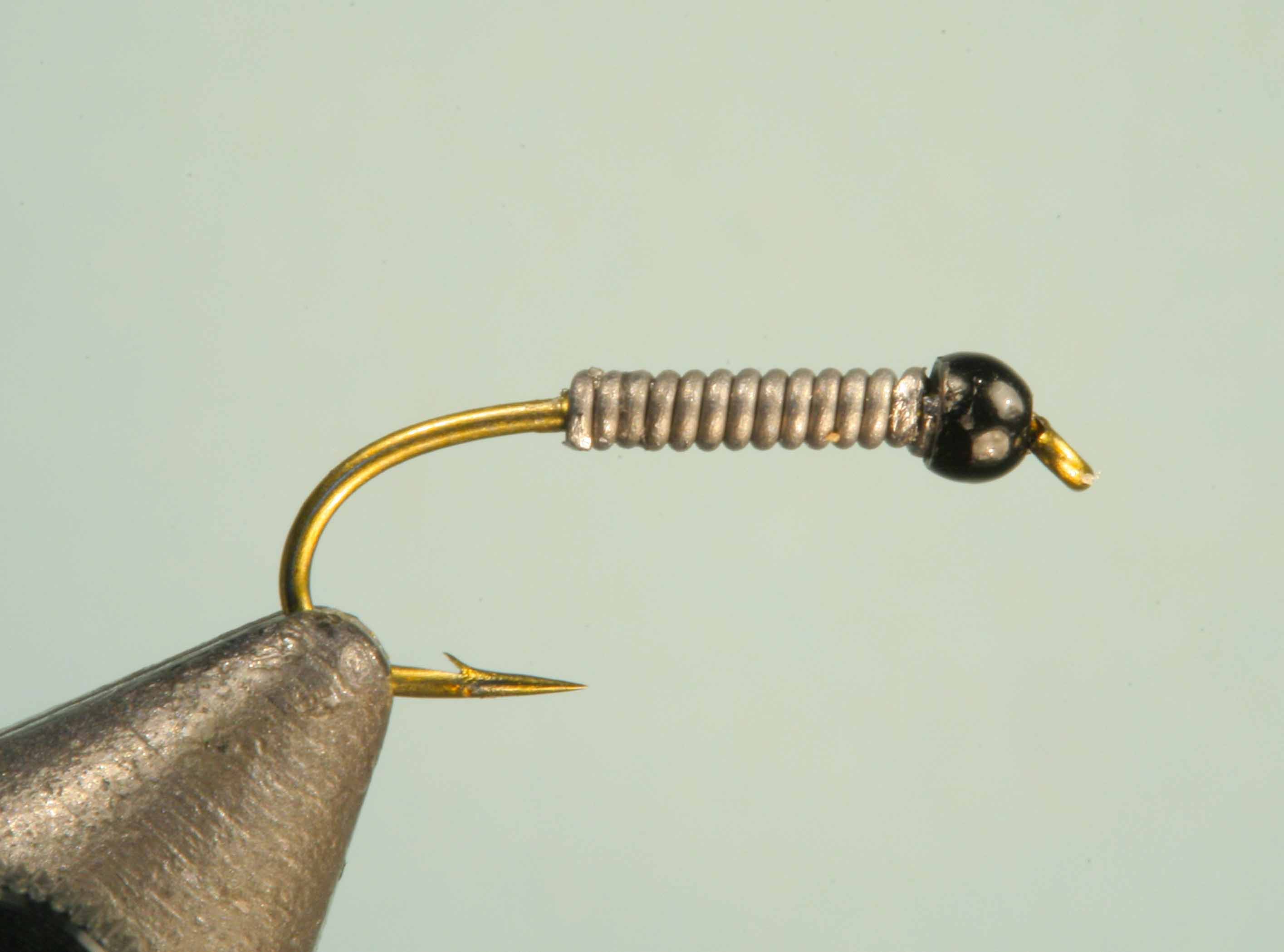
Step 1
Place the bead on the hook and fix it in your vice. Coat the hook shank with varnish and then over wrap with lead wire from a position above and just behind the hook point to the bead.
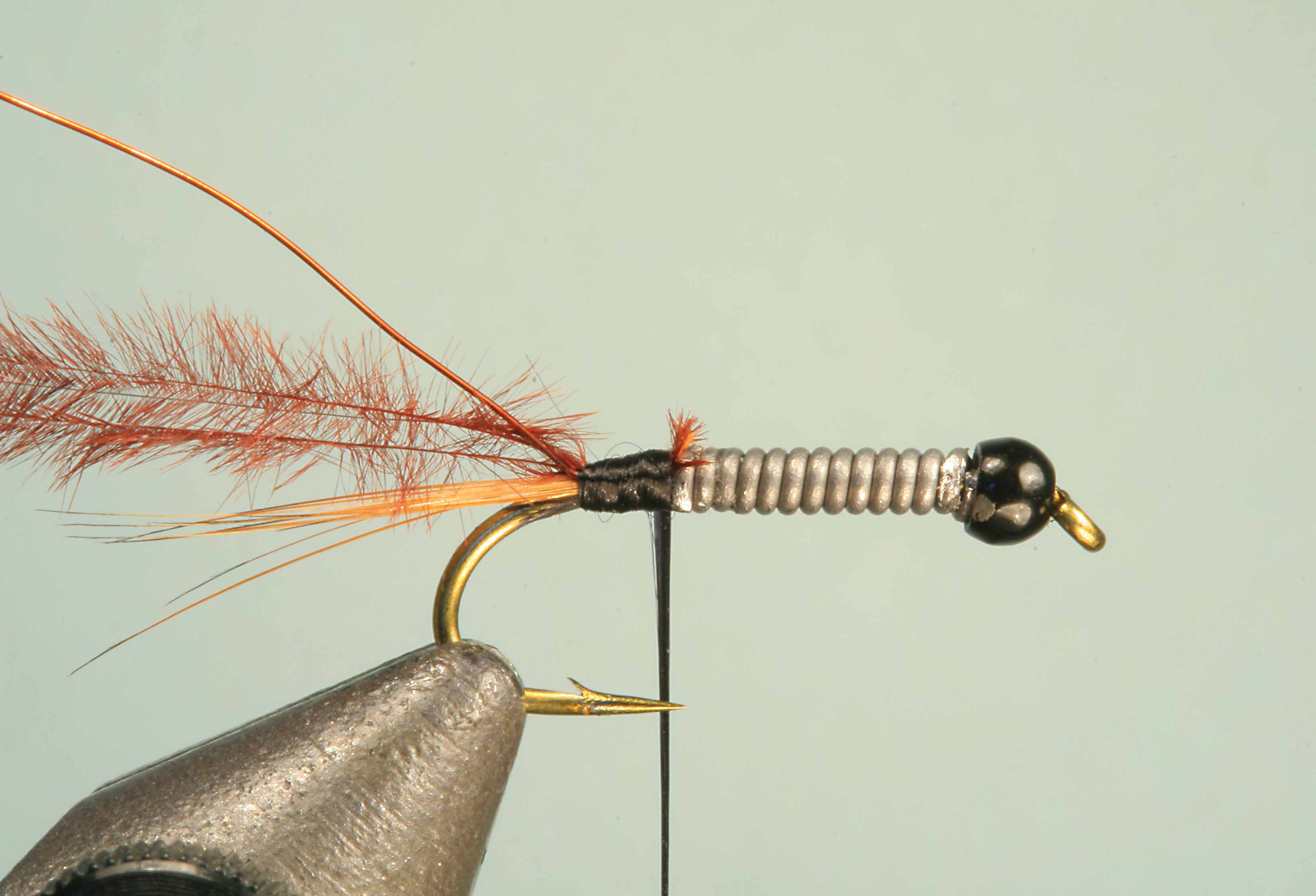
Step 2
Attach the thread just behind the lead wraps and tie in the tail fibres, rib and then the hurl on the section of the shank between a position immediately above the hook barb and where the lead begins.
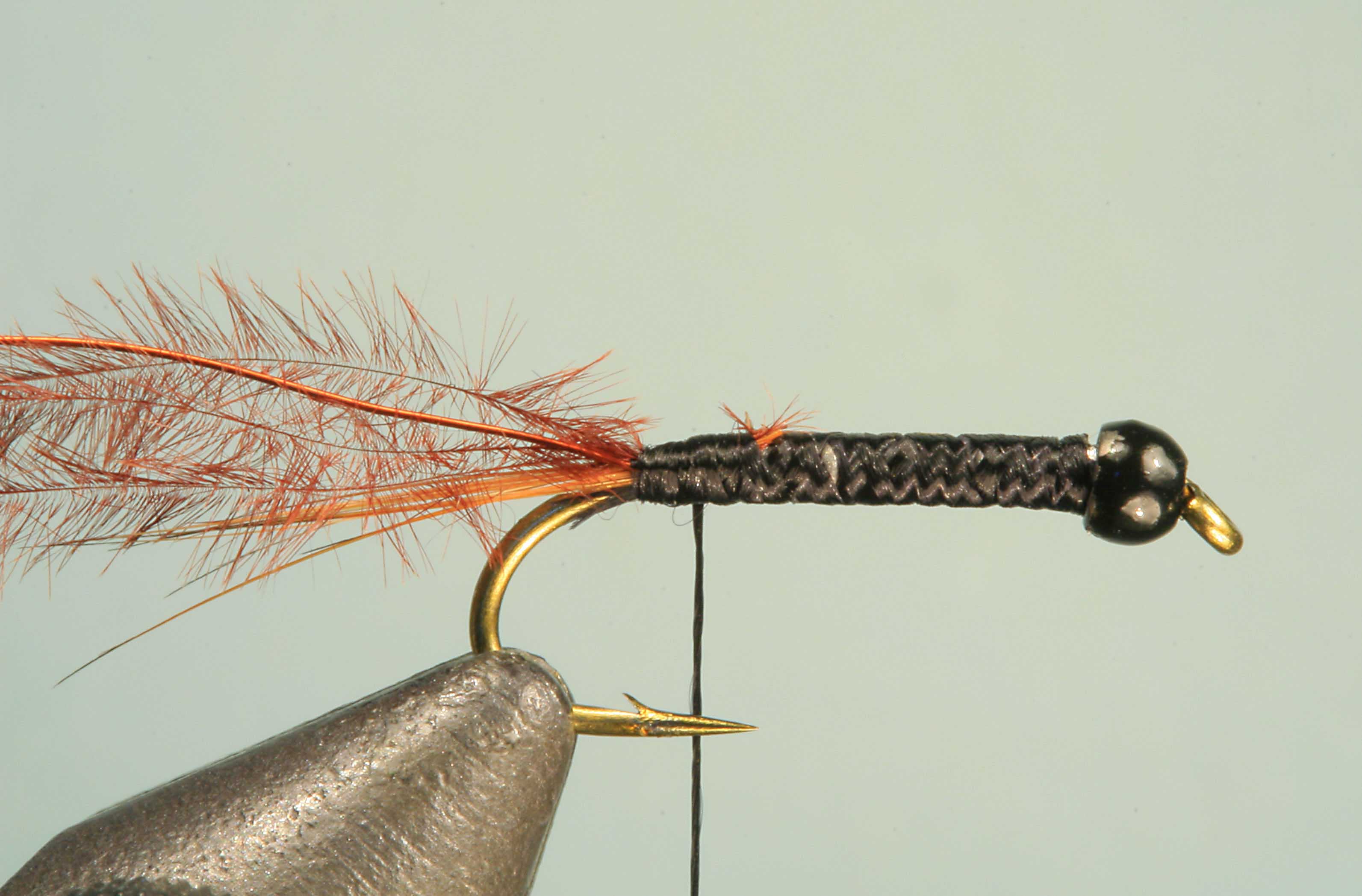
Step 3
Cover the lead under-body with open turns of thread, moving fore and aft and ending just behind the lead. Now flatten the lead with flat nose pliers.
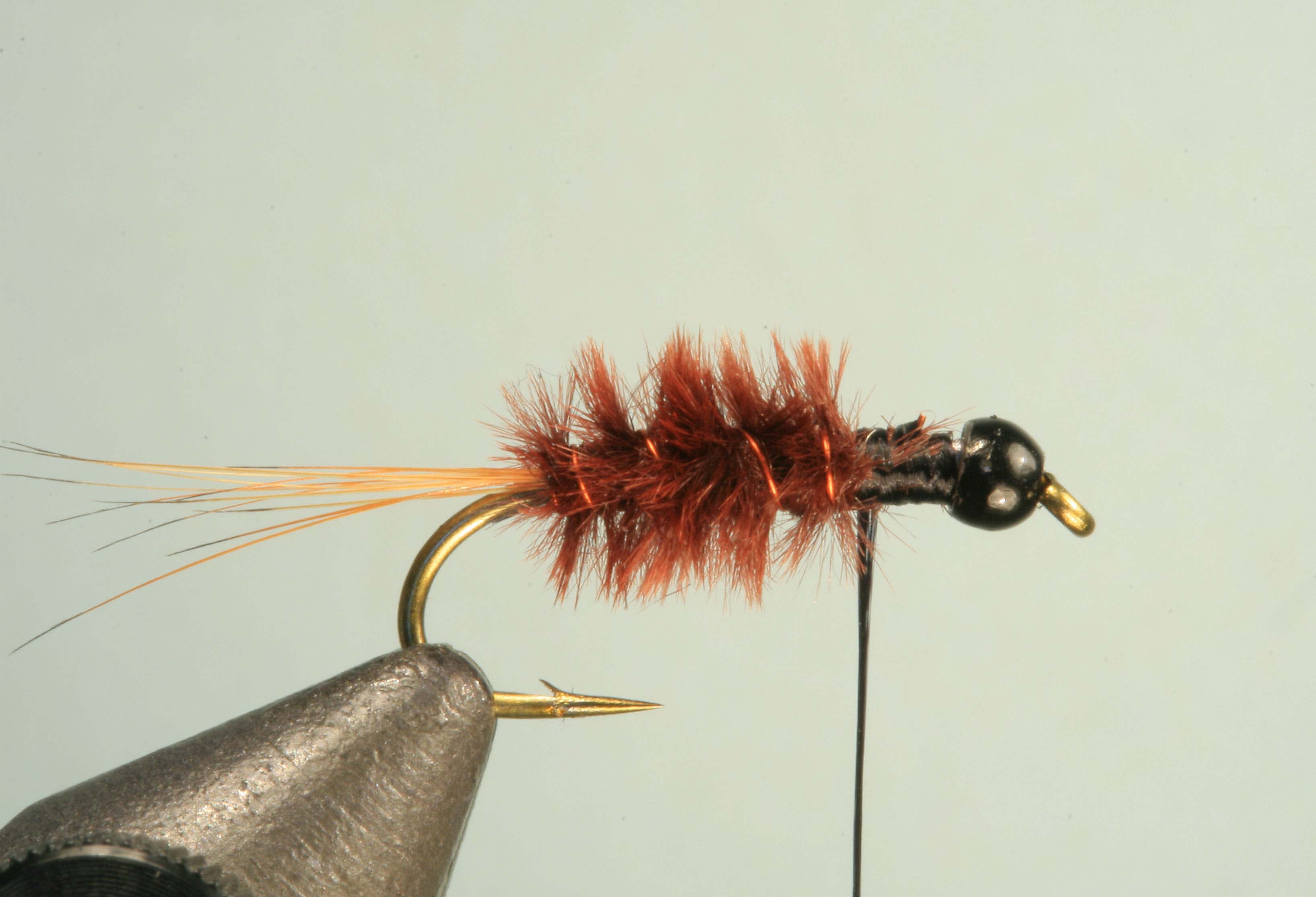
Step 4
Advance the thread in open turns to the position on the shank where the abdomen will end. Twist the ostrich hurls to form a loose rope, wrap them forward and around the shank and then tie them off. Counter wrap the rib so that it strengthens the abdomen.
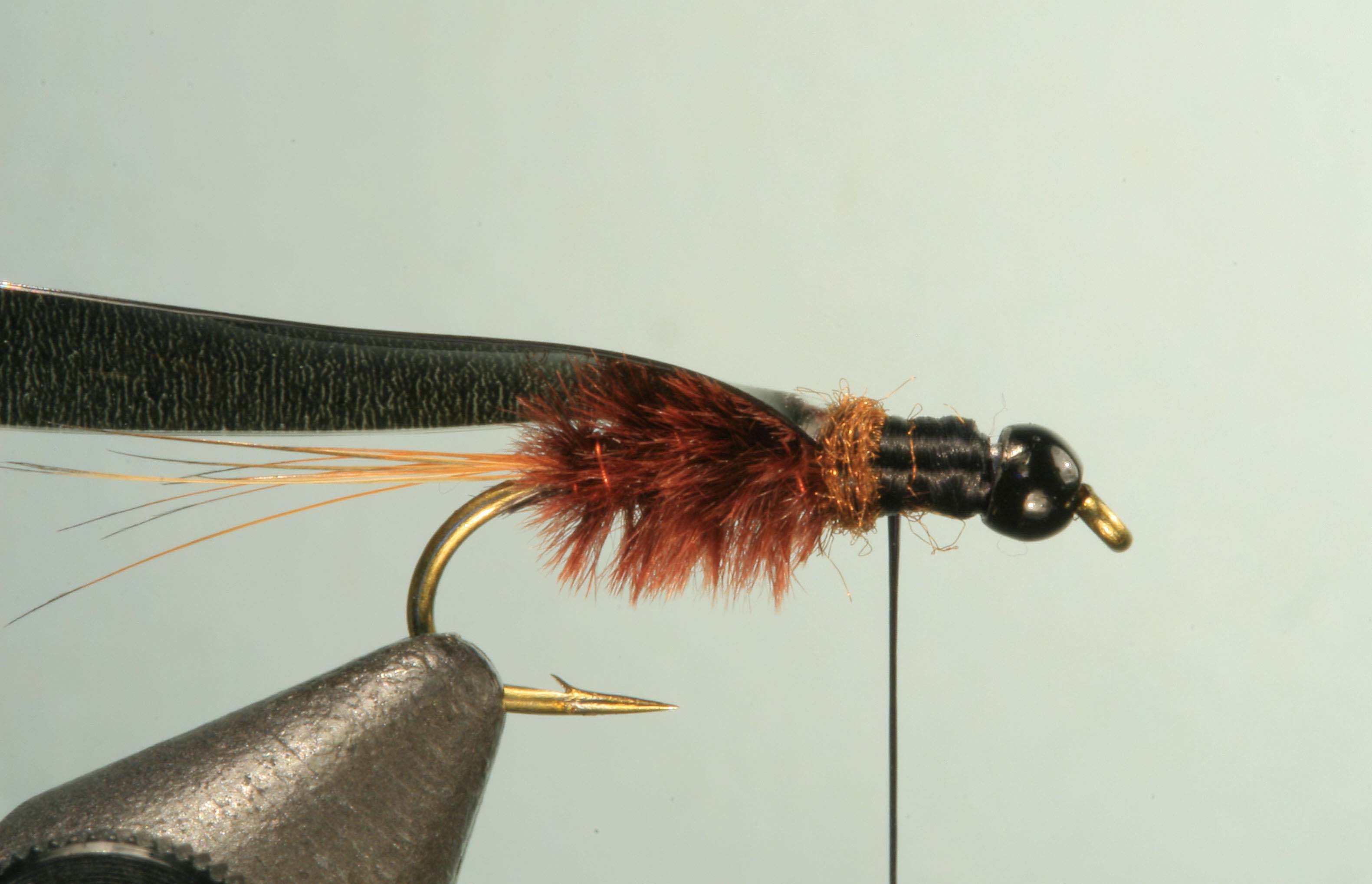
Step 5
Tie in the Thin Skin wing case so that the duller surface (i.e. the surface to which the colour is applied) is facing upwards. This insures the inked surface is protected from scratching when the wing case is folded forward. Now dub a small ridge of dubbing about 1mm wide to ensure the back legs will splay outward.
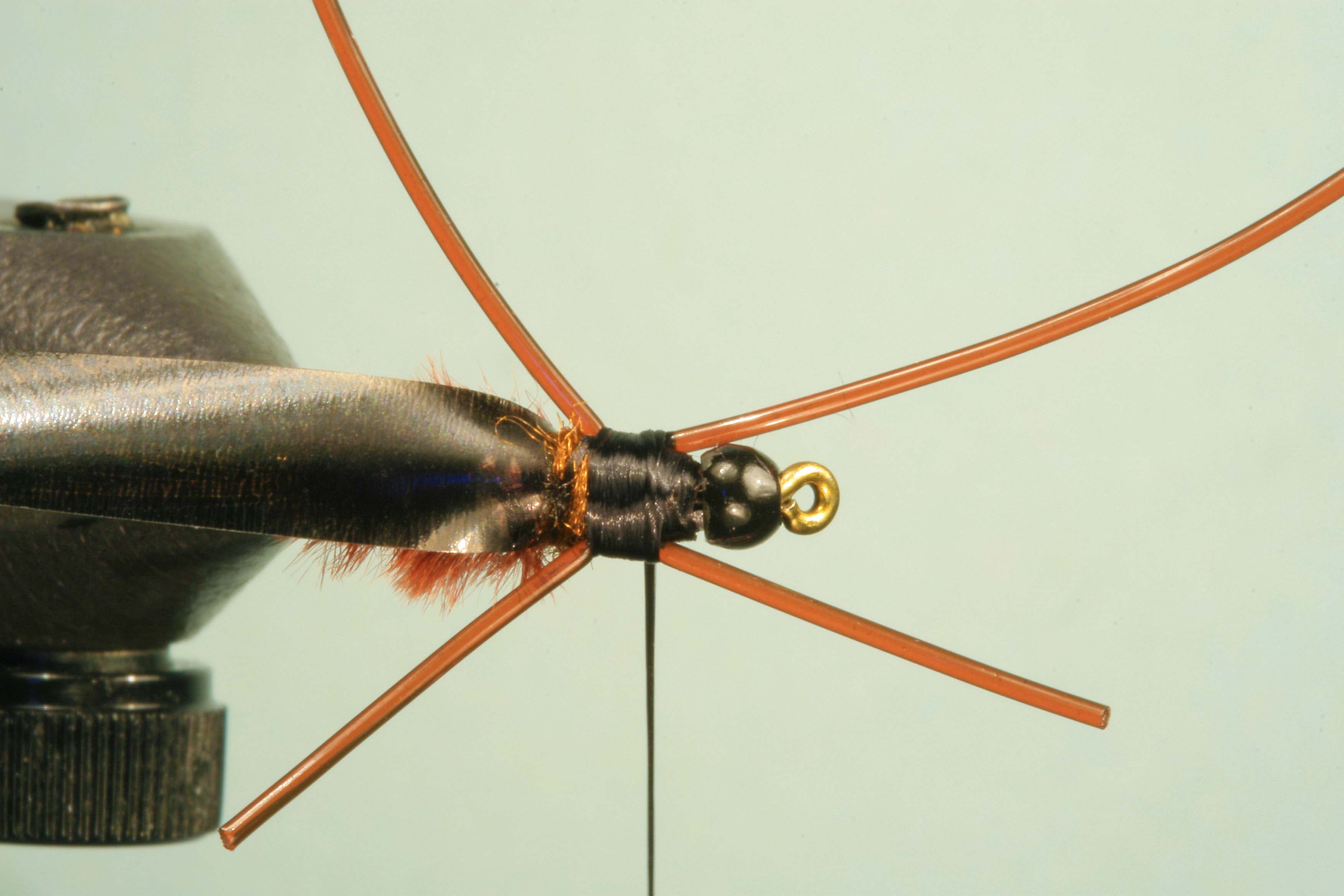
Step 6
Tie in two, 2cm lengths of Stretch Cord, one on either side of the thorax, using as much torque as is required to ensure they stand outward. Note that the thread wraps almost touch the dubbing in the rear but that there is a space between the bead and front legs.
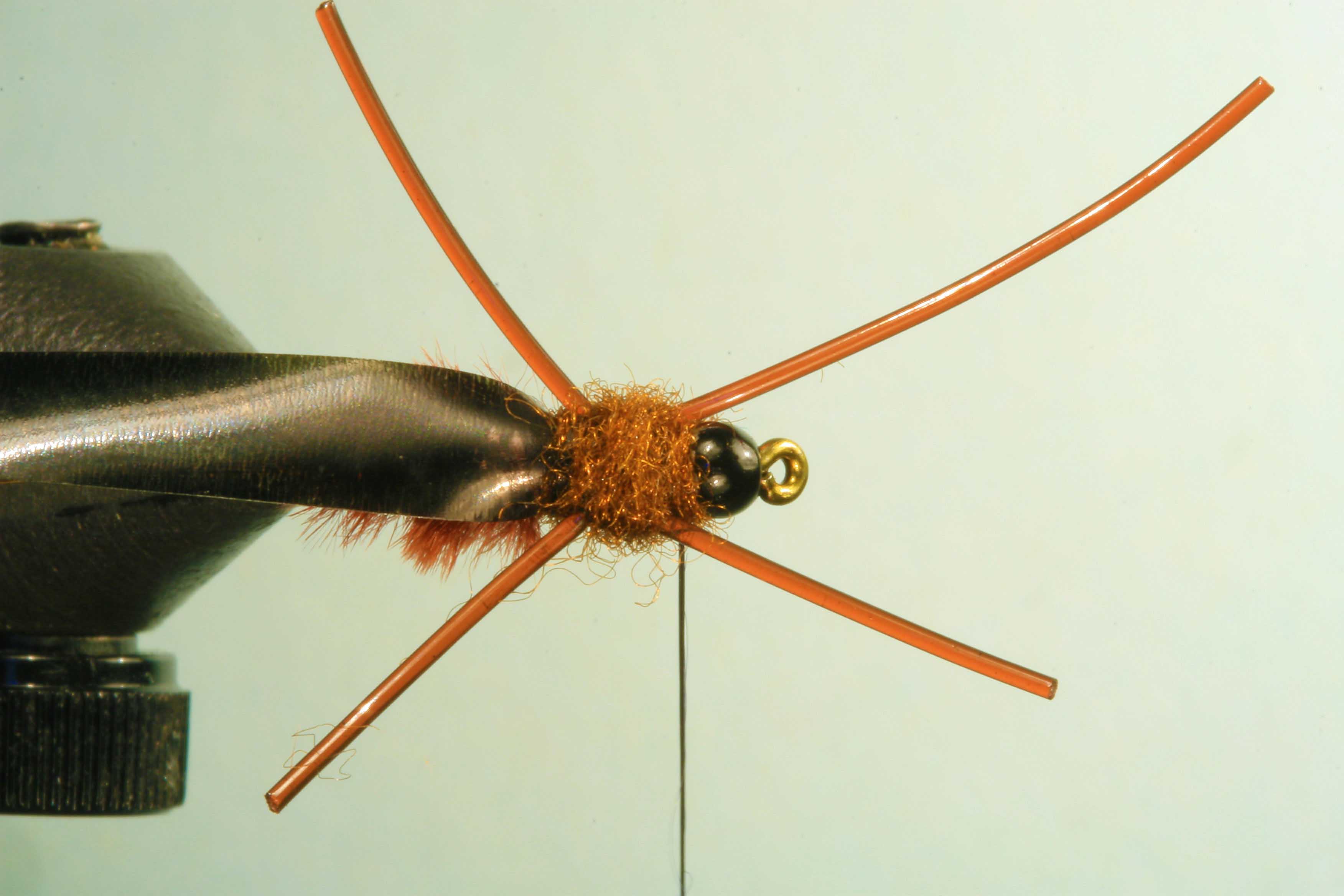
Step 7
Apply a thin noodle of Antron dubbing to the thread and complete the thorax, first dubbing between front and back legs and then ahead of the front legs.
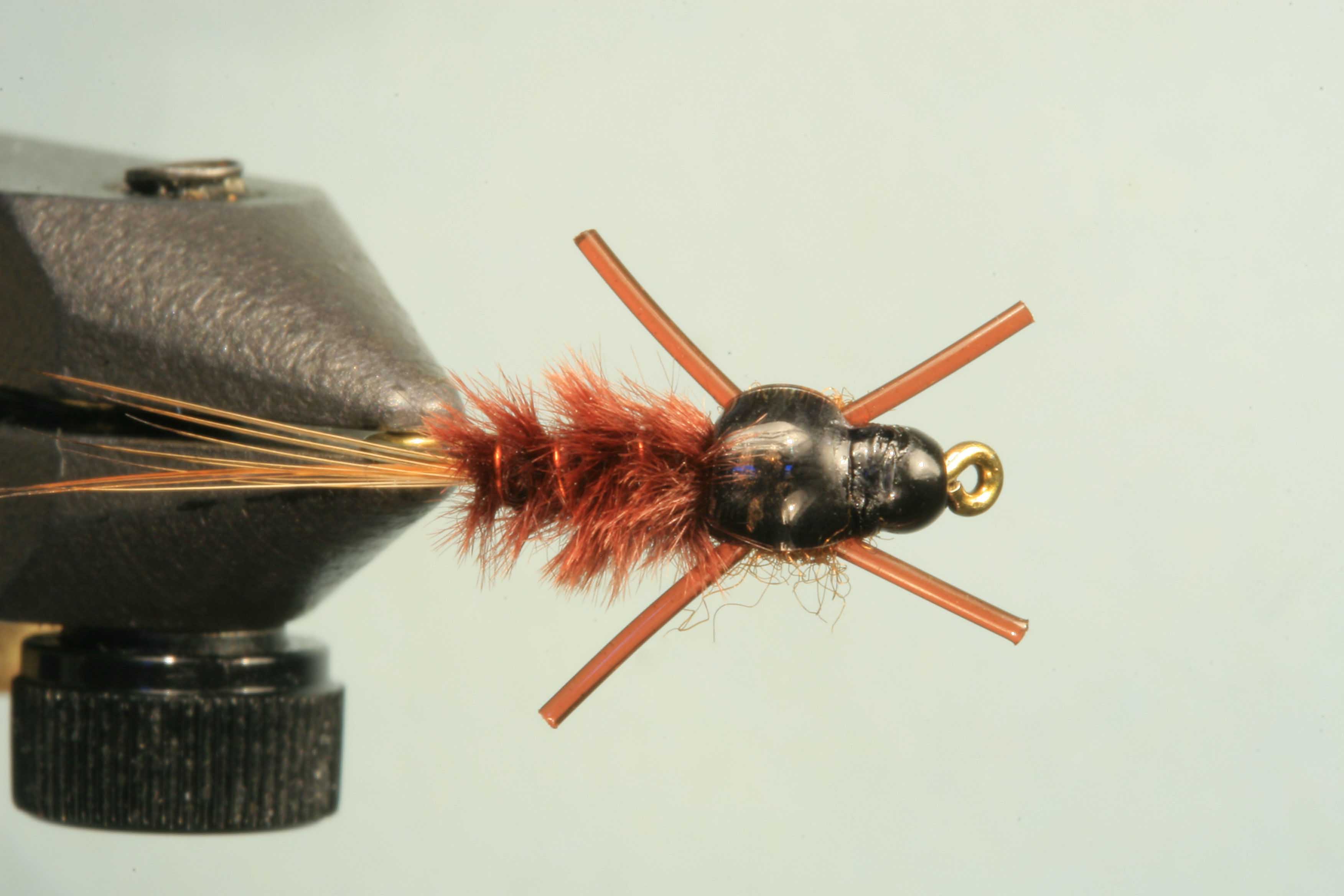
Step 8
Draw the wing case forward and secure it with two firm thread wraps and two half hitches. Trim away the excess Thin Skin as close to the thread wraps as is possible, varnish and tie off. Trim each of the four legs to a length of 5mm.
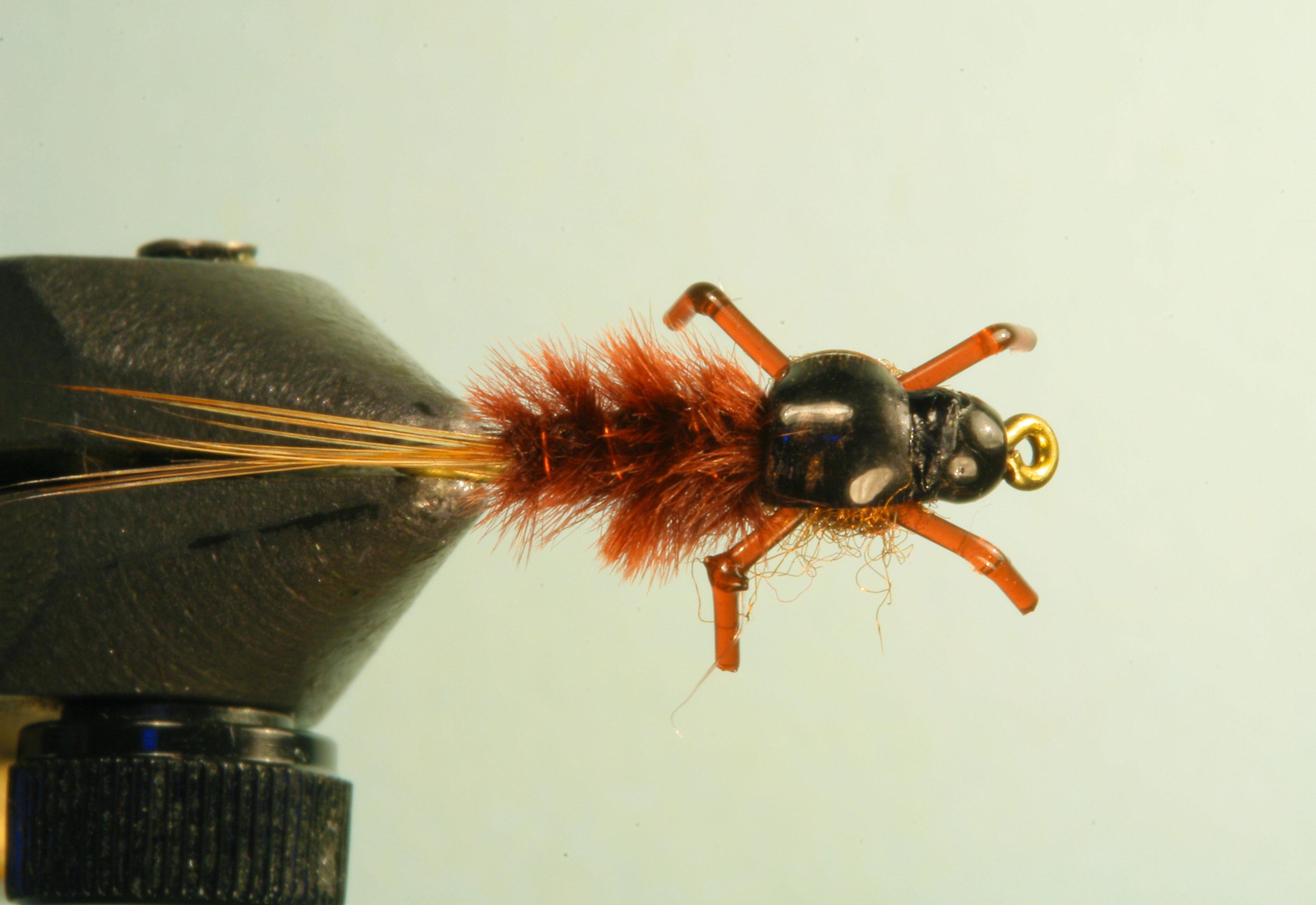
Step 9
If you do not have a hot-tip tool, heat a pin over a candle or cigarette lighter until it is red hot. Raise it carefully beneath a leg about midway along it. As soon as the leg begins to droop remove the heat and immediately press against the tip of the Stretch Cord with the tip of the index finger of the opposite hand. If you do not achieve enough of an angle first time round repeat the process. The near-side back leg demonstrates the result of too much heat. In this case the Stretch Cord melted when I unintentionally allowed a red-hot pin to touch it.
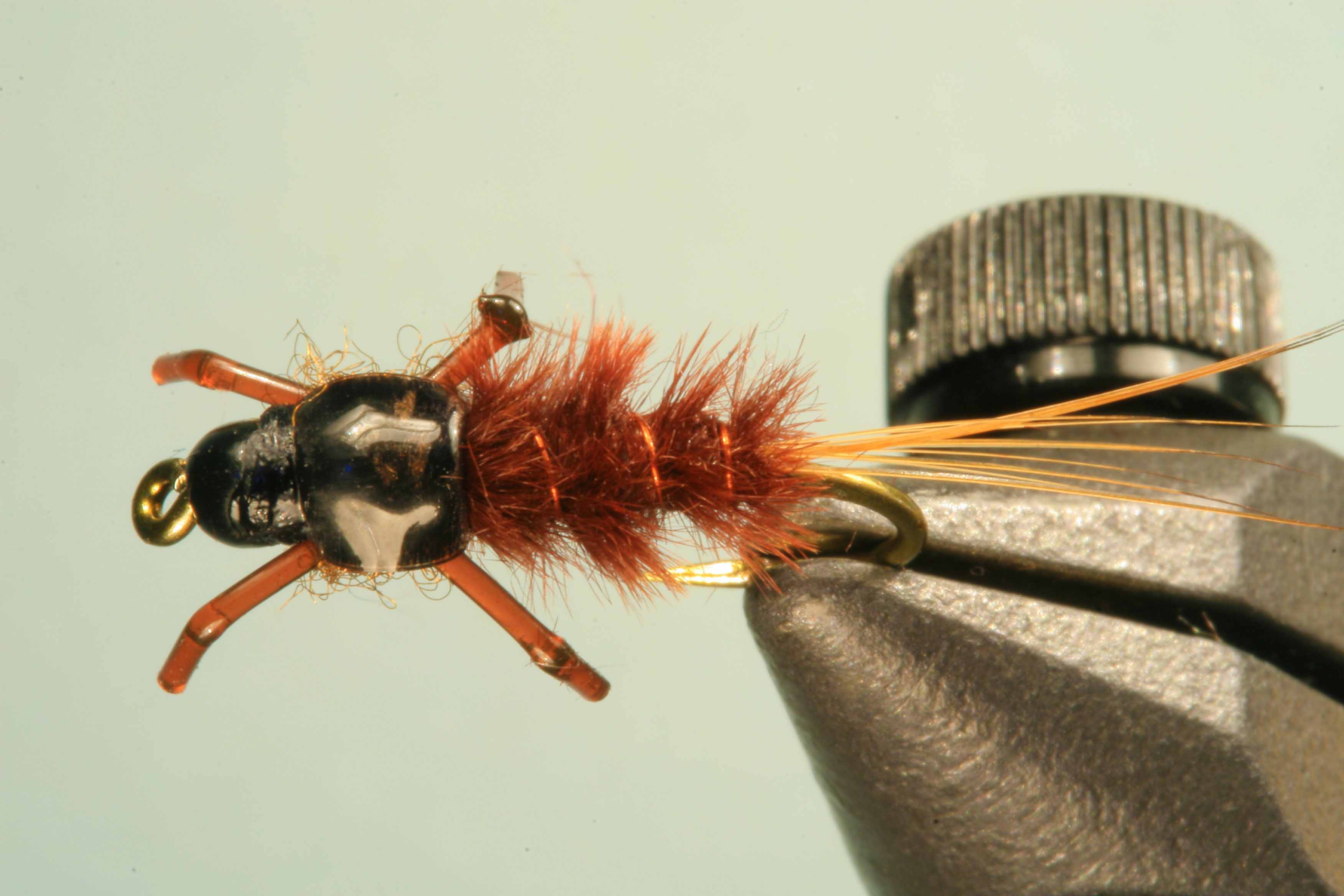
Step 10
Remove the fly from the vice and using a pair of sharp fine scissors trim the hurl fibres underneath the abdomen as short as possible. Next trim a longitudinal V or channel through the mid-line of the upper surface.
+ Effective Spey flies for New Zealand Trout and techniques for fishing them
+ Evolution of the Swing Minnow - A deadly Trout Spey Streamer
+ Introduction to wonders of Stretch Cord
+ Jelly Midge
+ Jelly Bloodworm and Jelly Grub
+ Jelly Caddis
+ Jelly Bellow Minnow
+ Jelly Crimp Nymph
+ Hot Foam Hopper
+ Hare's Mask Darter
+ Silicone Wing Cicada - Designing the Fly
+ Silicone Wing Cicada - Tying Steps
+ Gurgle Pop Minnow
+ Cutting your own Foam Cylinder
